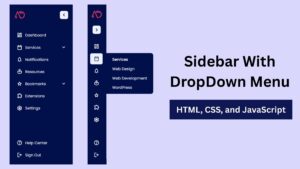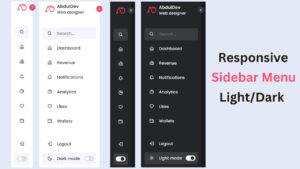
Unlimited Content Writing Guideline for Freshers

In today’s digital landscape, content writing has emerged as a powerful tool for businesses to engage their audience, build brand authority, and drive conversions. For freshers stepping into this field, mastering the art of writing clear, compelling, and SEO-friendly content is essential. This guideline offers a comprehensive overview of best practices in content writing, from understanding audience needs to incorporating relevant keywords and maintaining a consistent tone. Whether you’re crafting blog posts, product descriptions, or social media updates, this guide will help you create content that resonates and performs.
Understanding the Importance of Content Writing
High-quality content has become crucial to every successful marketing campaign in today’s digital world. Whether you are a business owner, potential client, job seeker, or freelance writer, creating relevant and engaging content is necessary.
The impact of content writing can be seen in various aspects of digital marketing, such as social media posts, Google Ads, email marketing, guest posts, and even online resume builders. Professional experience is undoubtedly essential, but having an excellent piece of content format, well-written and SEO-optimized, can give you an edge in a competitive job market.
Similarly, content writing is vital if you are a business owner looking to increase your brand’s visibility. A well-planned content plan and relevant content can help you connect with your audience and build trust and credibility. Moreover, by analyzing your Google Analytics, you can tailor your content to fit your target audience’s interests and needs.
As a freelance writer, producing high-quality content can lead to many benefits. Writing guest posts for popular websites or publications can significantly improve your portfolio and credibility, making it easier to land new projects. Sales experience is great, but it’s only some things in freelancing. You can also create your online platform or blog and use it as a tool to showcase your writing skills and attract potential clients.
Getting Started with Content Writing
So, you’ve decided to take the plunge and dive into the world of content writing. Congratulations! But where do you begin? First, it’s essential to understand that content writing encompasses various formats, including blog posts, articles, whitepapers, case studies, product descriptions, etc.
So, before you start writing, it’s essential to determine what type of content you want to produce. Once you’ve figured that out, you can begin looking for freelance writing jobs or writing for your website. Online job boards like ProBlogger, Freelancer, and Upwork are great place to start. These platforms can help you find freelance writing opportunities and connect you with potential clients. Another way to start content writing is by creating your blog. This will allow you to practice writing and give you a platform to showcase your work and attract potential clients.
Finally, it’s essential to hone your writing skills by reading and studying the work of other content writers. Pay attention to how they structure their writing, incorporate storytelling techniques, and use language to engage their audience. Please continually apply what you learn to your writing to improve and grow as a content writer.
Understanding Your Audience

Before you start writing content, it’s crucial to understand your audience. Who are they? What are their interests? What are their pain points? Answering these questions will help you create content that resonates with your audience and ultimately drives engagement.
To start, research your target audience demographics such as age, gender, location, and education level. Then, dive deeper by analyzing their behavior and preferences through social media, online forums, surveys, and customer feedback. Once you’ve gathered this information, create a buyer persona representing your ideal customer. This persona should include their likes and dislikes, goals, challenges, and pain points.
By understanding your audience, you can create content that speaks directly to them and solves their problems. It will also help you tailor your content to the channels they use to consume content and reach them most effectively.
Remember, the key to successful content writing is putting yourself in the shoes of your target audience and speaking their language.
Brainstorming Ideas for Content Writing
Once you understand the importance of content writing and how it can impact your audience, it’s time to start brainstorming ideas for your content. The process of generating content ideas can seem daunting at first, but with practice, it will become second nature.
- Conduct keyword research: Keyword research is critical in generating content ideas. You can tailor your content to meet those needs by understanding what people are searching for online. Use keyword research tools like Google Keyword Planner to find keywords and phrases relevant to your niche.
- Look at your competitors: Your competitors can inspire content ideas. Research their blogs, social media accounts, and websites to see what they’re writing about and the engagement they’re getting. Then, spin those topics to make them unique to your brand.
- Tap into your expertise: You have unique knowledge and experience that others can benefit from. Consider the questions your customers ask you, their problems, and the solutions you provide. Use these as inspiration for content ideas that will resonate with your audience.
- Monitor trends: Stay up-to-date with industry trends and news. Use Google Trends, social media monitoring tools, and other online resources to keep a pulse on what’s happening in your industry. Then, create content that ties into those trends and provides valuable insights.
- Repurpose old content: Don’t let your old content go to waste. Look at your blog posts, social media posts, and other content pieces to see if there’s an opportunity to repurpose them into new content formats like infographics, videos, or podcasts.
Brainstorming ideas for content writing takes practice and creativity. With these tips, you can generate a wide range of content ideas that resonate with your audience and help you achieve your content marketing goals.
Creating a Structured Outline for Content Writing
Once you have a topic or idea, creating a structured outline for your content is essential. A clear and well-organized overview can help you stay focused and on track and ensure your content flows smoothly.
Start by breaking down your content into main sections or critical points. Consider the overall structure of your content, including the introduction, main body, and conclusion. Within each area, list subtopics or ideas supporting your main point. You can also include any statistics, research, or quotes that you plan to use within your content. As you create your outline, think about the tone and style of your content. Use bullet points, headings, or numbered lists to make your content more readable and organized.
Remember that your outline doesn’t have to be set in stone. You may need to make adjustments or add additional sections as you start writing. The key is to have a clear direction and framework to guide your writing process.
Creating a structured outline for your content is essential for any content writer. It can help you stay focused and organized and ensure your final content is cohesive and engaging.
Crafting Engaging Headlines and Introductions
In content writing, the headline and introduction are like a book’s cover and first page – they can make or break your content. The headline is the first thing people will see, so it needs to grab their attention and make them want to read more.
The introduction must keep them hooked and set the tone for the rest of the content. Consider what makes your content unique or exciting to craft a great headline. Is it a solution to a problem? A new trend? A controversial topic? Use these elements to create a headline that will pique the interest of your readers. Keep it concise and catchy – aim for at most 10-12 words.
Regarding introductions, your goal is to keep the reader interested and encourage them to keep reading. Start with a hook that draws them in – a surprising fact, a thought-provoking question, or a relatable anecdote. Then, please give them a brief overview of what they can expect from the rest of the content.
It’s also important to consider your audience when crafting your headlines and introductions. What tone will resonate with them? What kind of language will they find engaging? Think about who you’re writing for and tailor your headline and introduction accordingly.
Finally, remember to keep your headline and introduction aligned with the rest of your content. Ensure that they accurately reflect the topic and tone of the following content. With some thought and creativity, you can craft headlines and introductions that draw readers in and keep them engaged.
Incorporating SEO into Content Writing
While writing quality content is crucial, ensuring your content is visible online is also essential. This is where search engine optimization (SEO) comes into play. Incorporating SEO practices into your content writing can help increase your visibility in search engine results pages and drive more traffic to your website. Here are some tips for incorporating SEO into your content writing:
- Do Keyword Research: Conduct keyword research to identify the terms and phrases your target audience is searching for. Use tools like Google Keyword Planner to find relevant keywords to incorporate into your content.
- Use Keywords Strategically: Use them strategically throughout your content once you have them. However, use them naturally and not unnecessarily stuff them into your content.
- Optimize Your Headings and Meta Descriptions: Your headings and meta descriptions are essential in SEO. Make sure to include your keywords in your titles and meta descriptions to help search engines understand the content of your page.
- Write Quality Content: It’s important to remember that while SEO is important, writing quality content is still the most crucial factor. Write content that provides value to your readers and engages them.
- Monitor Your Analytics: Keep track of your analytics to see how your content is performing. Make changes accordingly to optimize your content and improve your rankings.
Incorporating SEO into your content writing can initially seem overwhelming, but it will become second nature with practice. Keep these tips in mind, and you’ll be well on your way to writing high-quality and optimized content for search engines.
Formatting and Editing Your Content
Now that you’ve written your content, it’s time to polish it up and make it visually appealing to readers. Proper formatting is crucial in making your content look professional and easy to read.
Here are some formatting tips to keep in mind:
- Use headings and subheadings: Headings and subheadings break up your content into manageable sections and help guide your reader through your article.
- Use bullet points and numbered lists: Lists are a great way to present information clearly and concisely.
- Use images and other multimedia: Including photos, videos, and other multimedia can make your content more engaging and visually appealing.
- Keep your paragraphs short: Long sections can overwhelm readers, so keep them short and to the point.
- Choose an appropriate font: Make sure your font is easy to read and not too small or too big.
Once you’ve formatted your content, it’s time to edit it. Editing is essential in content writing because it ensures it is error-free and reads smoothly. Here are some tips for editing your content:
- Read your content aloud: This can help you catch awkward phrasing and grammatical errors.
- Use spell check: While not foolproof, spell check can help catch simple errors.
- Get a second opinion: Have someone else read your content and give you feedback.
- Cut unnecessary words: Be ruthless in eliminating unnecessary words or phrases that don’t add value to your content.
Following these formatting and editing tips can make your content look professional and read smoothly. With these steps, your content is ready to be published and shared.
Wrapping Up Your Content Writing Process.
Once you have finished writing your content, it’s time to wrap up your content writing process. This step is as important as the actual writing process because it ensures your content is polished, engaging, and ready to publish.
Firstly, take some time to read through your content carefully, making sure that everything flows well, makes sense, and is error-free. Look out for spelling and grammatical errors, as well as punctuation mistakes. Use a grammar-checking tool or enlist the help of a proofreader if you want to be extra thorough.
Next, make sure your content is well-formatted and easy to read. Break up large chunks of text with subheadings, bullet points, and images. Make sure your font is easy to read, and use formatting such as bold or italics to highlight important issues. It’s also essential to ensure that your content is optimized for SEO.
Double-check that you’ve included relevant keywords and phrases throughout your content, but remember to keep your content consistent with them. Your content should still read naturally and flow smoothly.
Finally, review your headlines and introductions to ensure they are engaging and attention-grabbing. These elements are essential to get readers to click through and read your content. Make sure they accurately represent your content and are not misleading. Read more about types of content writing.
Conclusion
Content writing is more than just putting words on a page; it’s about communicating ideas in a way that connects with your audience and meets the goals of your project. For freshers, adhering to these writing guidelines will ensure that your work is not only engaging but also aligned with SEO best practices, helping your content rank higher and reach a broader audience.
By refining your skills and following the steps outlined in this guide, you can establish yourself as a proficient content writer and contribute valuable content to any digital platform. Keep practicing, stay updated with the latest trends, and watch your writing evolve!
FAQs
What is the concept of unlimited content writing for freshers?
Unlimited content writing is a model where freshers can produce a high volume of written content within a given time frame. It typically involves creating various types of content, such as blog posts, articles, social media posts, website copy, and more.
How does unlimited content writing guideline benefit freshers in the field?
Unlimited content writing guidelines give freshers a structured approach to writing tasks. These guidelines help them understand the expectations, quality standards, and best practices of content writing. They also offer valuable insights into time management, research techniques, and writing strategies.
Are any specific requirements or qualifications needed to start unlimited content writing as a fresher?
While no strict qualifications are required, a strong command of the language, good grammar, and writing skills are essential. Basic SEO (Search Engine Optimization) knowledge and familiarity with content management systems (CMS) can also be advantageous.
What are the critical components of a practical unlimited content writing guideline?
A practical unlimited content writing guideline should include instructions on formatting, tone of voice, target audience, keyword usage, content structure, plagiarism avoidance, and the overall purpose and goals of the content. It should also guide research techniques and resources.
How can freshers improve their writing skills to excel in unlimited content writing?
Freshers can enhance their writing skills by reading extensively, practicing writing regularly, seeking feedback from peers or mentors, and taking advantage of online writing courses or workshops. They can also analyze successful content in their niche to learn from established writers.
Share on Social Media
Related Articles

10 Best Freelancing Skills to Learn for Students in
Discover the top 10 best freelancing skills for students in 2025. Learn valuable, in-demand skills like Web Development, Graphic Design,

The Ultimate List of Content Writing Tools for Novice Writers
Looking for tools to help improve your content writing skills? Check out this list of top content writing tools for

Mastering the Top 5 Types of Content Writing
Are you looking to become an expert in the Types of Content Writing? If so, you’ve come to the right
At AbdulDev, our mission is to support learners and developers by sharing helpful, easy-to-follow tutorials on modern web technologies like HTML, CSS, JavaScript, ReactJS, and PHP.
Useful Links
Copyright© 2025 | abduldev
















